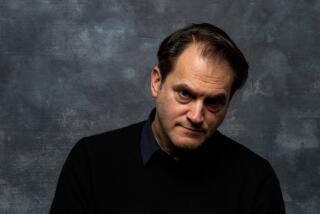Dr. A. Sackler; Psychiatrist and Collector of Art
- Share via
NEW YORK — Dr. Arthur M. Sackler, a research psychiatrist and entrepreneur who became one of the country’s leading art collectors and donors, has died of a heart attack at 73.
In the 1960s and 1970s, he established the Arthur M. Sackler Gallery for Early Chinese Stone Sculpture at the Metropolitan Museum and the Arthur M. Sackler Gallery at the Princeton Art Gallery.
And in 1985, the Arthur M. Sackler Museum was dedicated at Harvard University.
Born in Brooklyn
Sackler, who died Tuesday, was born in Brooklyn in 1913 and earned degrees at New York University in his two favorite fields, art history and medicine. He became a specialist in biological psychiatry and published, with collaborators, more than 140 research papers, many dealing with the body’s impact on mental illness.
He was the first to use ultrasound for diagnosis and identified histamine as a hormone while urging its use as an effective alternative to electric shock treatments for the mentally ill.
His art collecting began after graduation from college and spanned many periods. He also supported contemporary American painters.
To finance his medical studies, he joined a medical advertising concern and eventually became its principal owner. Sackler later made his fortune in medical advertising, medical trade publications and the manufacture of over-the-counter drugs.
Resident Psychiatrist
He served as a resident psychiatrist at Creedmoor State Hospital in the 1940s and was research director from 1949 to 1954.
Sackler edited the Journal of Clinical and Experimental Psychobiology from 1950 to 1962; in 1960, he started publishing the Medical Tribune, which eventually reached more than 1 million readers in 20 countries.
He served on the Board of Trustees at New York Medical College. He was also research professor of psychiatry at New York Medical College and senior research associate in anthropology at Columbia University.
Sackler’s collection of ancient and Far Eastern art will go on display in September in the Arthur M. Sackler Gallery at the Smithsonian Institution.
More to Read
The biggest entertainment stories
Get our big stories about Hollywood, film, television, music, arts, culture and more right in your inbox as soon as they publish.
You may occasionally receive promotional content from the Los Angeles Times.










